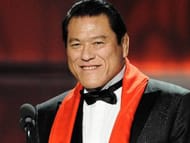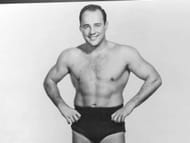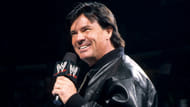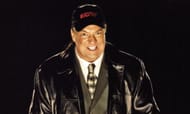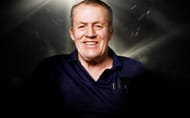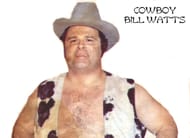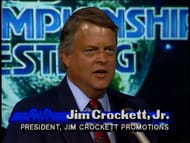In today’s world, professional wrestling has inherently become a one-man game as Vince McMahon literally holds monopoly over the business. Despite the presence of the Indy wrestling promotions and the recently started Lucha Underground, Vince’s WWE is the only one that has a worldwide presence.
People from across the globe watch the WWE and a fair amount of people watch New Japan Pro Wrestling but other wrestling promotions are mostly restricted to their respective regions.
However, as we all know, this wasn’t the case from the beginning. Early on, wrestling promotions were highly localised and there were various promotions across the United States.
People were more intent on watching special events between two wrestlers rather than the whole program as a form of entertainment. Over the years, this has changed and the business was revolutionised by some excellent wrestling promoters.
Insane Vince McMahon ideas that got canceled - Watch Here!
Let’s take a look at the top 5 wrestling promoters apart from Vince McMahon:
Antonio Inoki
Unlike the rest of the list, Antonio Inoki was from Japan and the founder of New Japan Pro Wrestling. Now, the top dog in Japan and probably the only company comparable to WWE across the globe, it started way back in 1972 by Inoki. He was made the top star of the company and due to his profound grappling ability, he was able to put up excellent shows.
NJPW were often involved in inter-promotion matches and even one such with Muhammed Ali. Inoki competed against Ali in a draw that was more infamous for the injury caused on Ali by Inoki.
While not only being a wrestler, Inoki was also an MMA fighter. He was infamously known for shooting during matches and changing the ending in favour of his own image. Despite that, his contributions to NJPW were vital and effectively put out All Japan Pro Wrestling back in 2000.
However, in 2005, Inoki sold the major shares of his company and faced Don Frye in his final match. Following retirement after decreasing influence within the company, he has started a new promotion that has yet to receive much acclaim.
However, he was inducted into the WWE Hall of Fame in 2010 as suggested by his inter-promotion affiliations and some of the matches with Hulk Hogan, Bob Backlund. While he may not be famous much in most parts of the world, he was instrumental in the rise of New Japan Pro Wrestling.
Verne Gagne
While not only being an extraordinary wrestling promoter, Verne Gagne was an excellent wrestler as well. At a time when Vince McMahon Sr. dominated the NorthEast region, Gagne’s territory included the mid-west and was based in Minneapolis. Initially an NFL player, he chose wrestling over that and in 1960, started his own wrestling promotion, the American Wrestling Association (AWA).
And given that he was an able wrestler himself, he became the face of that promotion and started winning the Championships that very year. Unlike many of the others back then, Gagne concentrated more on putting up a good show in the ring leading to the increased recruitment of technical wrestlers by him. He was known for bringing relatively lesser known wrestlers who were technically proficient such as Larry Hennig, Dog Vachon etc.
He was known for bringing relatively lesser known wrestlers who were technically proficient such as Larry Hennig, Dog Vachon etc.
His biggest draw, however, was Hulk Hogan whom he hired in the early 1980s following Hulk’s underwhelming run in WWF. While Hogan was not the type of wrestler Gagne preferred, he did give Hogan a run at the top considering his ability to draw in big numbers.
And subsequently, Gagne’s preference for technical wrestlers let him down as people thronged to watch the big muscled up performers while Vince McMahon’s WrestleMania dominated the business across the United States.
He would eventually shut down the company in 1991 but that was only after leaving his mark on the business. His efforts led him to be inducted into four of the most prestigious wrestling Hall of Fames – WWE, WCW, Pro Wrestling Hall of Fame, Wrestling Observer Hall of Fame.
Eric Bischoff
He was undoubtedly the man that came closest to knocking Vince McMahon’s WWF off their perch. Initially working in AWA, Bischoff took little time in working his way up the ladder and became the Executive Vice President of WCW. Then on, it was a direct shot by him at Vince McMahon as he repeatedly tried to overtake WWF.
One of the major creators of the NWO storyline, the WCW reached new heights as they dominated Monday Night ratings against Raw is War for 84 consecutive weeks. He pulled off the almost impossible heel turn of Hulk Hogan to perfection and really had the cue on professional wrestling, back then.
However, as we know, the subsequent rise of the Attitude Era followed by lack of new content by the WCW led to WWF gaining back their advantage.
It was his move to promote Kevin Nash as head booker that resulted in the Fingerpoke of Doom, often cited as the single major event leading to the downfall of WCW, while on the other hand, the WWF were fashioning a worldwide audience with the rise of Steve Austin.
Bischoff would soon find his way out of WCW, while they were merged with WWE and then, joined the WWE. Then, in 2010, he joined TNA in another attempt to grow a new wrestling promotion to big heights but it was a failed one, as TNA were unable to cultivate the viewership that WCW did.
Paul Heyman
The man who so brilliantly advocates for Brock Lesnar, is considered by many as the indirect architect for the ‘Attitude Era’. Long before Vince McMahon pulled it off with Austin at the helm, Paul Heyman’s ECW brought into the mix Hardcore wrestling with adult content as well.
He had a unique vision and that served the company well as Heyman’s wrestlers were of all types. He had the hardcore ones like Mick Foley, Dudley Boyz, Sandman while also introducing technical wrestlers such as Eddie Guerrero and Chris Benoit.
The WWE inherently adopted this theme while also taking wrestlers from ECW and went on to achieve never-seen-before success while Heyman’s promotion went to the stage of bankruptcy in 2001.
While he came off ECW, he immediately joined WWE as a commentator and soon became the creative head of SmackDown. It was under him that SmackDown became a popular brand with the ‘six’ famed wrestlers known for putting on excellent matches.
Beyond all this, Heyman was excellent at scouting young wrestlers and helping them grow. Some of his most famous trainees include Steve Austin, CM Punk, Brock Lesnar.
Heyman was also the one who saw potential in Steve Austin after he was fired from WCW, and offered him a job at ECW, after which Austin would go to the WWE and be the catalyst of their most popular era.
Stu Hart
If we compiled a list of the greatest wrestling families, undoubtedly the Canadian Hart Family would feature among the top. And Stu Hart was the first member of the Hart Family to delve into professional wrestling and laid the foundation for the next two generations.
Back in 1948, Hart opened a new wrestling promotion named Stampede Wrestling in Calgary, in Canada that would go on to dominate the Western region of Canada for years to come.
Hart operated the company for a staggering period of 36 years after which he sold it to the WWF but only to buy it back the subsequent year. They would go on for another four years until 1989 when Stu Hart closed the promotion.
As we all know, the Hart Family has predominantly produced technically proficient wrestlers who have put on some of the best matches in the WWE over time. Stu Hart was the father of Bret Hart and Owen Hart, who were some of the finest wrestlers to emerge out of Stampede Wrestling.
The wrestling school of Stampede Wrestling went by the name of “The Dungeon” and produced some of the best wrestlers that we have seen such British Bulldog, Dynamite Kid, Brian Pillman, Jim Neidhart, Chris Benoit etc.
Stu Hart was quite inactive by the time he passed away at the age of 88 in 2003. His contributions to wrestling and the WWE were showcased as he was inducted into the WWE Hall of Fame Class 2010.
Bill Watts
A famed wrestler as much as he was a promoter, Bill Watts saw an illustrious career as a promoter and booker across three big companies. In his wrestling days back in the 1960s, he was a challenger of Bruno Sammartino during his eight-year title run while also going for the American Wrestling Association (AWA) belts. However, post his in-ring days; he became a promoter with his Mid-South Wrestling in the Louisiana region.
Back then, Watts was credited with pioneering the idea of weekly-episodes that allowed him to build up storylines backed with in-ring action. And then, he had some solid wrestlers such as Ted Dibiase, Jim Duggan, ‘Dr. Death’ Steve Williams and so on who were excellent draws. Watts was very careful about kayfabe and would never allow the heels and faces to be seen together.
In fact, it is said that he had different rooms for the heels and faces so that people wouldn’t see them together. He has criticized about breaking kayfabe and wrestling fans being aware of what’s going on behind the scenes, in his autobiography released in 2006.
While he had a very good run with Mid-South Wrestling that was eventually renamed as “Universal Wrestling Federation”, he had to sell it to Jim Crockett, owing to financial problems.
He would then go on to work in WCW as Executive President and later, the WWF as a head booker. However, his tenure there was short-lived but that did not stop him from being inducted into the WWE Hall of Fame Class 2009.
Jim Crockett, Jr.
As we speak of whom Bill Watts sold his UWF to, it is none other than Jim Crockett, Jr; taking over from his father, who had been the company’s head for almost thirty years, Jim Crockett introduced some radical changes. He brought in George Scott as Head Booker while recruiting excellent young talents such as Ric Flair.
Mid-Atlantic Wrestling, as it was known had been a tag-team oriented promotion for a long time but in the revamp, had started to concentrate more on singles wrestling. The various local wrestling shows, in regions around North Carolina were merged into one unit which started shooting on Wednesdays.
As they started growing popular, secondary shows were started, which were some kind of a first and within no time, Jim Crockett was elected the head of the NWA.
In the early 1980s, Vince’s WWF was repeatedly forcing their surge in popularity on the NWA which led to Crockett consolidating many of the NWA divisions and starting a new show, Starrcade. Very soon, in 1985, Crockett came in charge of WCW and then, his business started flourishing.
It was in the following three years that he had the best time of his career as the Jim Crockett Promotions went on to put on some big matches and win major awards. Ric Flair was the face of his company and went on to headline the flagship show nine times making a name for himself.
However, around 1988, the company started to decline financially leading Crockett to sell it to Ted Turner, and put an end to the NWA for good as an individual wrestling body.
Make Sportskeeda your preferred choice for WWE content by clicking here: Source preferences
